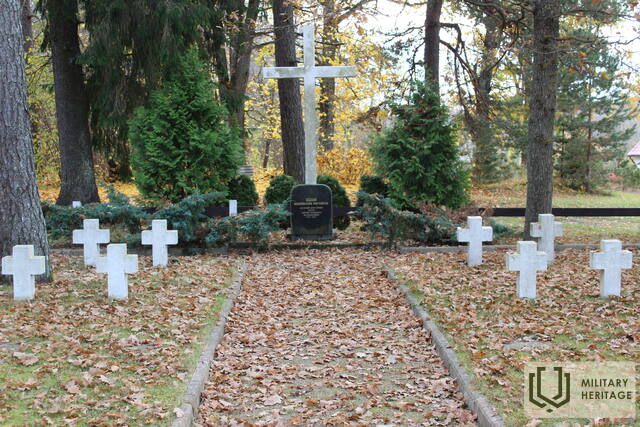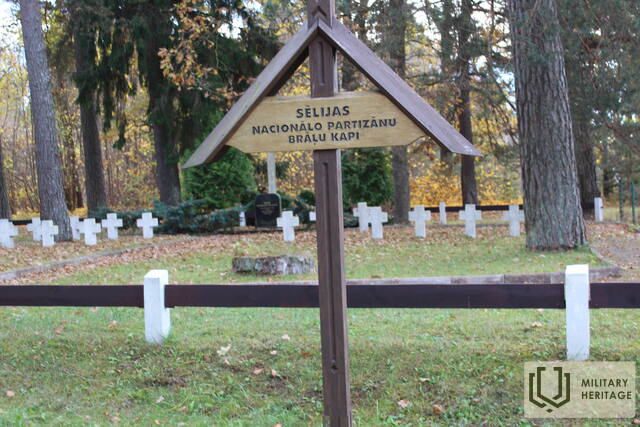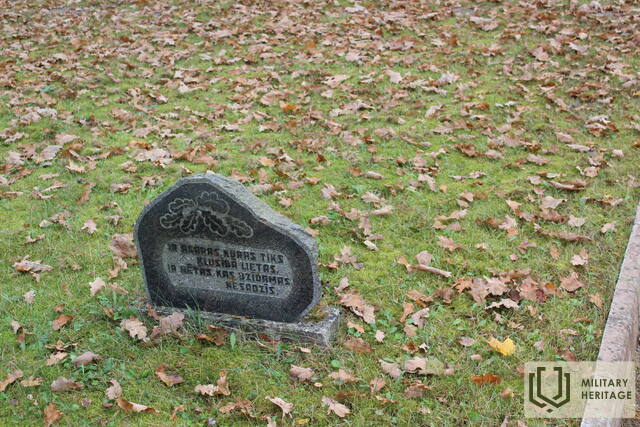Sėlijos nacionalinių partizanų brolių kapinės
Memorialinė vieta

Sėlijos nacionalinių partizanų brolių kapinės buvo atidarytos 2004 m. spalio 30 d., remiant Latvijos gynybos ministerijai ir Aknīstės savivaldybei. Jose palaidoti 1949 m. gruodžio 19 d. mūšyje Kalnos parapijos Dimantų miške žuvę partizanai: Albertas Karankevičius (1914–1949), Vilis Tunkelsas (1911–1949), Arnoldas Tunkelsas (1926–1949), Osvaldas Tunkelsas (1929–1949), Ēvaldas Kundzanas (1927–1949).
2005 m. čia buvo perlaidoti ir 1945 m. vasario 13 d. mūšyje Elkšnių girioje kritę partizanai: Juris Alfreds Voldemārs Lācis (1908-1945), Eduards Kaminskis (1910-1945), Albertas Mežaraups (1945 m. Alberts Mežaraups, 1945 m. (1915-1945), Antons Bružiks (1911-1945), Jānis Britāns (1926-1945) ir vienas nežinomas. Bendrosiose kapinėse taip pat yra sovietų okupacinės valdžios įkaitais paimtų ir mūšio metu žuvusių Martos Mežaraupės (1907–1945), Alberto Lācio (1902–1945), Jurio Resnīčio (1901–1945) ir Pēterio Bitės (1907–1945) palaikai, taip pat žuvusio Indano-Grāvelsono grupės partizano Voldemaro Otto Sātniekas (1911–1950). Aknīstės brolių kapinėse taip pat yra paminklas Aknīstės kuopos nacionaliniam partizanui Alfredui Silaraupui (1925–1946), žuvusiam per Čekos operaciją 1946 m. liepos 30 d. siaurajame geležinkelyje Elkšnių miške.
Sėlijos nacionalinių partizanų brolių kapinėse pastatyto Baltojo kryžiaus papėdėje stovi juodo granito stela su Latvijos nacionalinių partizanų asociacijos emblema ir po ja iškaltu tekstu „Sėlijos nacionaliniams partizanams. Jūs paaukojote savo gyvybes už Latviją kovoje su komunistiniu okupaciniu režimu 1944–1954 m.“ Kapinėse taip pat yra paminklinis akmuo su užrašu „Yra ašarų, kurios bus išlietos tyloje. Yra randų, kurie neužgis užgijus“, kurį Stanislava Šadurska pastatė Atgimimo pradžioje netoli duobės, kurioje čekistai palaidojo dieną prieš tai, 1955 m. vasario 14 d., žuvusius nacionalinius partizanus ir įkaitus.
Panaudoti šaltiniai ir literatūra:
H. Bruņinieks. Apgaudinėja mirtį. Ryga: Latvijos žiniasklaida, 2022, p. 218.
Nežinomas karas. Latvijos nacionalinių partizanų kova su sovietų okupantais 1944–1956 m. 1-asis leidimas. Ryga: Domas sūks, 2010, p. 300–301.
https://karavirukapi.blogspot.com/2022/02/akniste-selijas-nacionalo-partizanu.html
Susijusi laiko juosta
Susijusios temos
Susijusi istorija
Selio miško brolių gyvenvietė Sūpės pelkėje
Sūpės pelkė siejama su nacionalinių partizanų gyvenviečių ir mūšių vietomis, kurios susiformavo sąveikaujant žmonėms ir vietovėms. Ji aprašyta tremtinio latvių rašytojo Alberto Eglīčio baladėje apie įvykius jo gimtojoje Sūpės pelkėje „Samanose ir purve“ – duoklėje Sūpės pelkės partizanams:
... „1945 m., kai pelkėje švytėjo ruduo –
Pokļevinskio gimtadienio proga Lieljānis vakarienės metu dalijasi:
Gluosniuose fermentuotas alus,
Romulanai garbina sviestą,
Džiovinu mamos kmynų duoną,
Džiovintas kumpis kovo mėnesio gabalėliuose,
Ir Stučkos svogūnai,
Ildzeniecės sūris.
Kambariai dervingose sienose
Ir žaibas trenkė širdyse,
Ir vienuolikoje sielų merdi –
"Žemėje supuvusios šaknys..."
Ši praeities interpretacija su įvykiais po Antrojo pasaulinio karo apėmė žmonių liudijimus, dvasios išraiškas ir vertybių sistemas. Ji primena visuomenės paramą nacionaliniams partizanams, kurių okupacinė valdžia negalėjo taip lengvai nugalėti.














